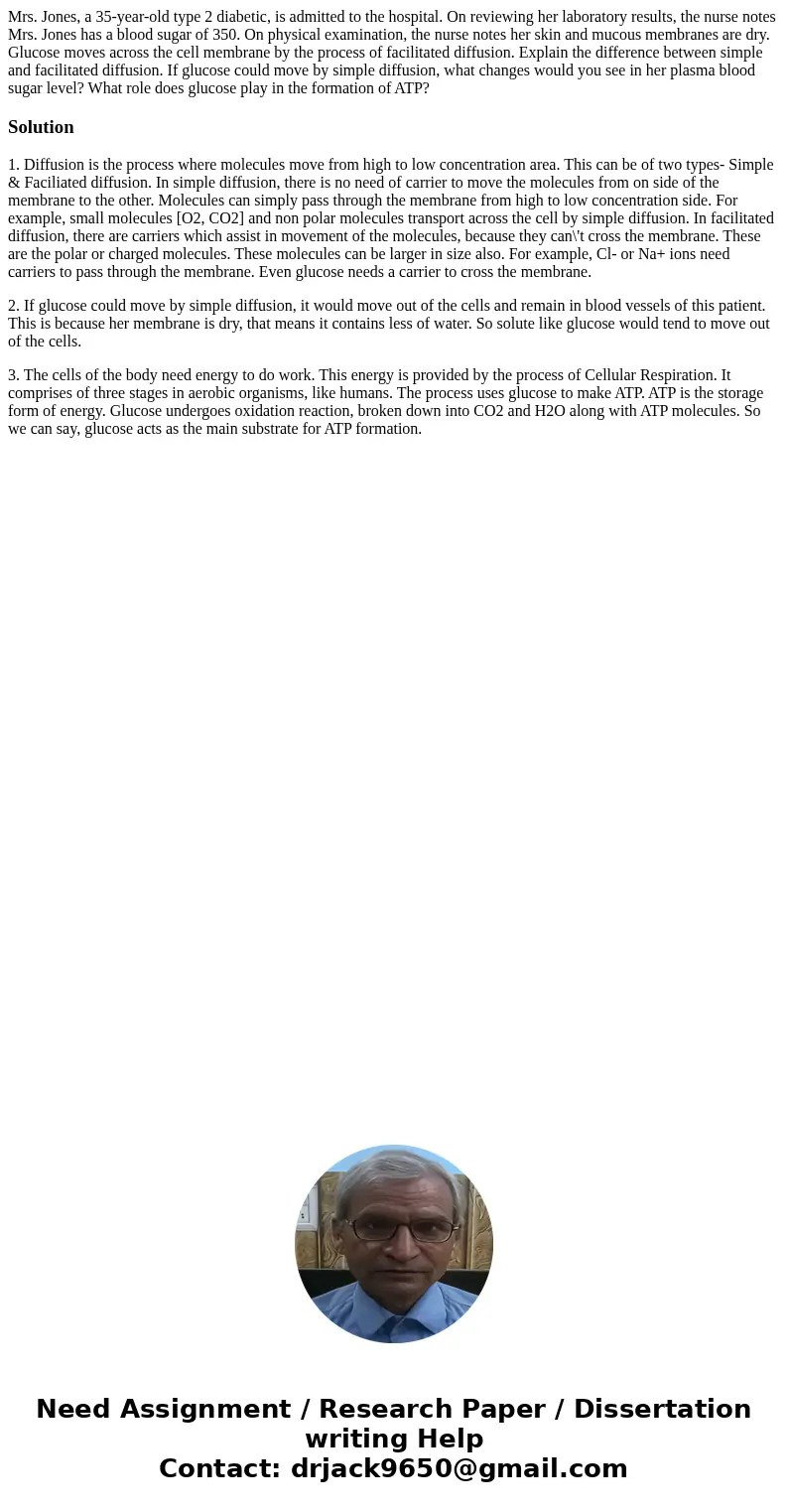Mrs Jones a 35yearold type 2 diabetic is admitted to the hos
Solution
1. Diffusion is the process where molecules move from high to low concentration area. This can be of two types- Simple & Faciliated diffusion. In simple diffusion, there is no need of carrier to move the molecules from on side of the membrane to the other. Molecules can simply pass through the membrane from high to low concentration side. For example, small molecules [O2, CO2] and non polar molecules transport across the cell by simple diffusion. In facilitated diffusion, there are carriers which assist in movement of the molecules, because they can\'t cross the membrane. These are the polar or charged molecules. These molecules can be larger in size also. For example, Cl- or Na+ ions need carriers to pass through the membrane. Even glucose needs a carrier to cross the membrane.
2. If glucose could move by simple diffusion, it would move out of the cells and remain in blood vessels of this patient. This is because her membrane is dry, that means it contains less of water. So solute like glucose would tend to move out of the cells.
3. The cells of the body need energy to do work. This energy is provided by the process of Cellular Respiration. It comprises of three stages in aerobic organisms, like humans. The process uses glucose to make ATP. ATP is the storage form of energy. Glucose undergoes oxidation reaction, broken down into CO2 and H2O along with ATP molecules. So we can say, glucose acts as the main substrate for ATP formation.

 Homework Sourse
Homework Sourse